Alterocca is one of the eldest Italian postcard publishers. The publishing house introduced the scenic postcard in Italy. Alterocca also published many film star postcards during the 1910s and later it had success with pin-up postcards. This is the last post in a series on postcard publishers
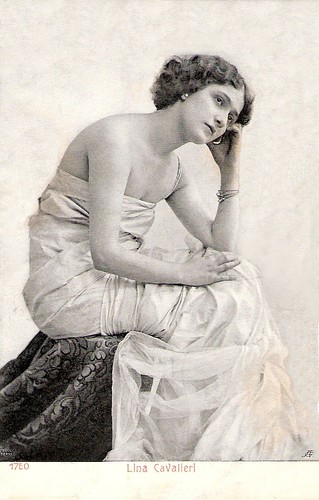
Lina Cavalieri. Italian postcard, no. 1750. Photo: Alterocca, Terni.
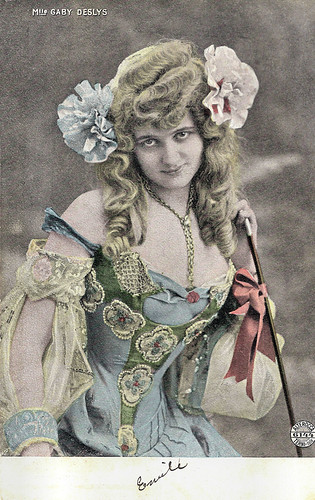
Gaby Deslys. Italian postcard by Alterocca, Terni, no. 6144.
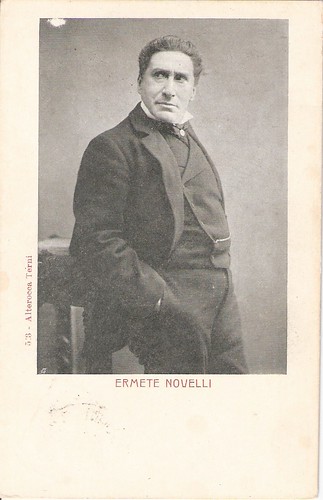
Ermete Novelli. Italian postcard by Alterocca, Terni, no. 513.

Ermete Zacconi. Italian postcard by Alterocca, Terni, no. 2379. Photo: G. Rossi. Card dated February 1904.
Virgilio Alterocca (1853-1910) founded the first company for illustrated and photographic cards in Italy in 1897. He had already founded a typographic company in 1877 working for newspapers and producing posters. The passion for typography Virgilio had inherited from his father Ferdinand Alterocca , owner of a small stationery. He was at the helm of the newspaper L'Annunziatore Umbro Sabino in the period 1883-1888
Around 1896, thanks to modernising techniques in phototypography from Germany and Switzerland, he was able to make photographic cards a booming business.
Virgilio had many different activities. He worked as a teacher, publisher, politician in the ranks of the local Socialist Party, and was a benefactor. In politics, he held the role of Councillor for Education in the town of Terni, in the period between 1902 and 1903. In 1907, he mediated between labourers and management during a strike in Terni's steel factory. In 1908 he was awarded the title of Cavaliere del Lavoro.
His name is connected with the birth of the Professional School of Terni established in 1909, with the assistance of the city and of the most important industries in Terni. The school was opened in 1910 by Italy's prime minister Luigi Luzzati.
From 1886 to 1892 he was also owner of the Arena Gazzoli, now known to Terni as the cinema Politeama. Thanks to his foresight there is the facility of telephone service in Umbria, which he started in 1887.

Italian postcard by Stabilimenti Alterocca, Terni. This is the cover of a complete series of 8 postcards regarding the 1916 Gloria film production Dagli Appennini alle Ande, based on the homonymous story by Edmondo De Amicis from the volume Cuore (Heart), directed by Umberto Paradisi, and starring Ermanno Roveri as little Marco.
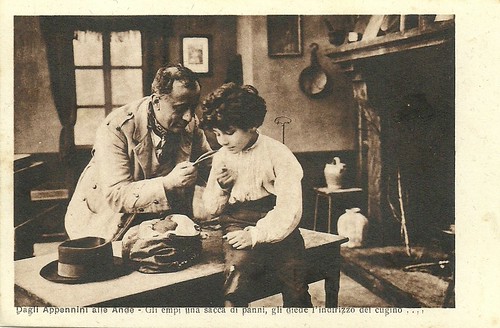
Italian postcard by Stabilimenti Alterocca, Terni, for the film Dagli Appennini alle Ande (Umberto Paradisi, 1916), starring Ermanno Roveri. Caption: He filled a sack with clothes for him, and gave him the address of the cousin.
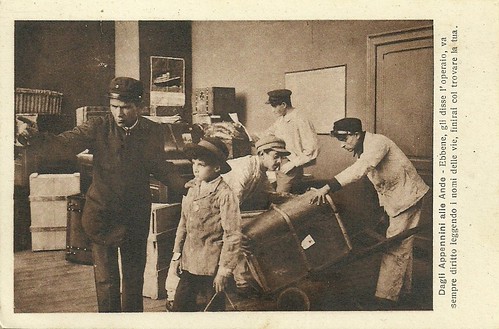
Italian postcard by Stabilimenti Alterocca, Terni, for the film Dagli Appennini alle Ande (Umberto Paradisi, 1916), starring Ermanno Roveri. Caption: “Well, then,” said the laborer, “keep straight on through there, reading the names of all the streets on the corners; you will end by finding the one you want.”
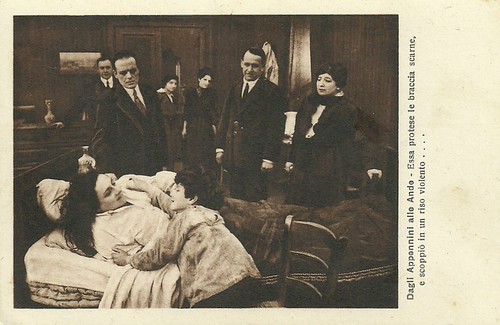
Italian postcard by Stabilimenti Alterocca, Terni, for the film Dagli Appennini alle Ande (Umberto Paradisi, 1916), starring Ermanno Roveri. Caption: She stretched out to him her fleshless arms, and she burst into a violent laugh.
Alterocca's first postcard was dedicated to Cascata delle Marmore, the famous waterfalls near Terni. In the following decade he won many international awards for his work. His aesthetic is also expressed in the building of the firm, when he commissioned the young architect Cesare Bazzani to build the new factory on Terni's main city street in Liberty style.
Interesting is his series on the stage play Romanticismo by Gerolamo Rovetta, which premiered at the Teatro Manzoni in Milan in 1903. Star was Tina Di Lorenzo, who figured on many early postcards by Alterocca. Alterocca also became famous for his portrait postcards of Opera singers, like Lina Cavalieri.
When the cinema became popular around 1903, Alterocca contacted the French production company Pathé Frères and started to produce postcards for the Pathé films, such as Epopée Napoléonienne/Napoleon Bonaparte (Lucien Nonguet, 1903), La vie et la passion de Jésus Christ/The Life and Passion of Christ (Lucien Nonguet, Ferdinand Zecca, 1903), and Souvenir de guerre Russo-Japonaise/Remembrance of the Russian-Japanese war (1905).
Vergilio Alterocca's life came to an end in 1910 in the village of Arrochar, near his hometown, Terni, struck down by a stomach cancer. He was survived by his wife Ezzelina Alterocca, and his children Silvia and Fernando.
Despite the premature death of Virgilio Alterocca, the company met a progressive expansion in the following decades. The heirs continued the invention of the founder. Among their works was a postcard series on the silent film I promessi sposi/The betrothed (Eleuterio Rodolfi, 1913), produced by the Ambrosio studio and based on the novel by Alessandro Manzoni.
Another good example is a postcard series on the screen adaptations of Cuore (Heart), the short stories by Edmondo De Amicis. In 1915-1916, nine films were produced which were based on nine of these stories. A good example is Dagli Appennini alle Ande (Umberto Paradisi, 1916) with the young Ermanno Roveri in the lead role. Alterocca's postcards used film stills and contributed to the reappearance of the lost films. Today, these films are restored and put online by the Cineteca Italiana in Milan and the Cineteca di Bologna.
In the 1930s, the Alterocca factory had about 200 employees and measured 5,720 square meters of industrial space. It reached a production capacity of 50 million cards. Through a network of tobacconists, newspapers and stationery, the postcards produced in Terni were widely distributed throughout Italy.
Despite the damage suffered during the bombing of World War II, Alterocca's activity continued after the war and remained significant until the 1970s. Then the black and white cards did not survive the competition with colour postcards. Following the closure of the production of black and white postcards, the archive (sheets, film negatives, positive prints, printing materials and postcard samples) was stored at Terni, waiting for the future
Since 1995, under the official name of Archivio Fotografico Alterocca, it was acquired by the company Alterocca Media, which initiated historical study and archival research. The archive documentation had an extraordinary width: over
one million images, published and unpublished, related to about 5,000 locations in Italy and abroad, produced during almost a century.
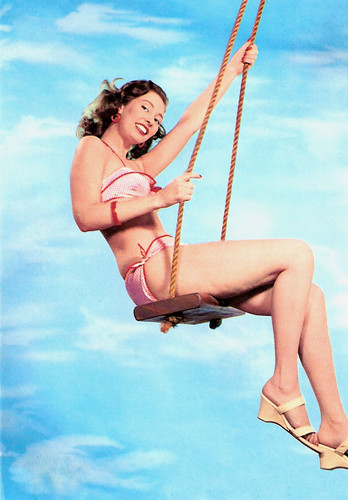
Italian postcard by Alterocca, Terni, no. A 4060.
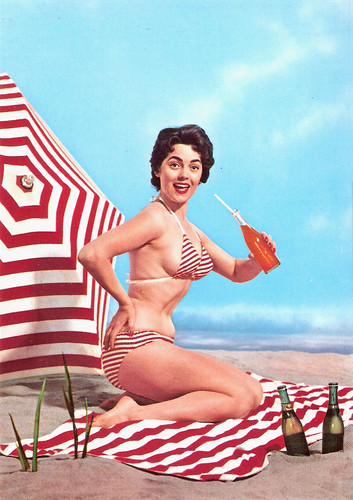
Italian postcard by Alterocca, Terni, no. 32994.

Terence Hill. Italian postcard by Alterocca, Terni.

Bud Spencer. Italian postcard by Alterocca, Terni.
This was the tenth and final post in a series on film star postcard publishers. For earlier posts, see the links at right under the caption 'The Publishers'.
Sources: Pompeo De Angelis (Alterocca Virgilio, il re della cartoline postali - Italian), Wikipedia (Italian).

Lina Cavalieri. Italian postcard, no. 1750. Photo: Alterocca, Terni.

Gaby Deslys. Italian postcard by Alterocca, Terni, no. 6144.

Ermete Novelli. Italian postcard by Alterocca, Terni, no. 513.

Ermete Zacconi. Italian postcard by Alterocca, Terni, no. 2379. Photo: G. Rossi. Card dated February 1904.
Booming Business
Virgilio Alterocca (1853-1910) founded the first company for illustrated and photographic cards in Italy in 1897. He had already founded a typographic company in 1877 working for newspapers and producing posters. The passion for typography Virgilio had inherited from his father Ferdinand Alterocca , owner of a small stationery. He was at the helm of the newspaper L'Annunziatore Umbro Sabino in the period 1883-1888
Around 1896, thanks to modernising techniques in phototypography from Germany and Switzerland, he was able to make photographic cards a booming business.
Virgilio had many different activities. He worked as a teacher, publisher, politician in the ranks of the local Socialist Party, and was a benefactor. In politics, he held the role of Councillor for Education in the town of Terni, in the period between 1902 and 1903. In 1907, he mediated between labourers and management during a strike in Terni's steel factory. In 1908 he was awarded the title of Cavaliere del Lavoro.
His name is connected with the birth of the Professional School of Terni established in 1909, with the assistance of the city and of the most important industries in Terni. The school was opened in 1910 by Italy's prime minister Luigi Luzzati.
From 1886 to 1892 he was also owner of the Arena Gazzoli, now known to Terni as the cinema Politeama. Thanks to his foresight there is the facility of telephone service in Umbria, which he started in 1887.

Italian postcard by Stabilimenti Alterocca, Terni. This is the cover of a complete series of 8 postcards regarding the 1916 Gloria film production Dagli Appennini alle Ande, based on the homonymous story by Edmondo De Amicis from the volume Cuore (Heart), directed by Umberto Paradisi, and starring Ermanno Roveri as little Marco.

Italian postcard by Stabilimenti Alterocca, Terni, for the film Dagli Appennini alle Ande (Umberto Paradisi, 1916), starring Ermanno Roveri. Caption: He filled a sack with clothes for him, and gave him the address of the cousin.

Italian postcard by Stabilimenti Alterocca, Terni, for the film Dagli Appennini alle Ande (Umberto Paradisi, 1916), starring Ermanno Roveri. Caption: “Well, then,” said the laborer, “keep straight on through there, reading the names of all the streets on the corners; you will end by finding the one you want.”

Italian postcard by Stabilimenti Alterocca, Terni, for the film Dagli Appennini alle Ande (Umberto Paradisi, 1916), starring Ermanno Roveri. Caption: She stretched out to him her fleshless arms, and she burst into a violent laugh.
Passion for typography
Alterocca's first postcard was dedicated to Cascata delle Marmore, the famous waterfalls near Terni. In the following decade he won many international awards for his work. His aesthetic is also expressed in the building of the firm, when he commissioned the young architect Cesare Bazzani to build the new factory on Terni's main city street in Liberty style.
Interesting is his series on the stage play Romanticismo by Gerolamo Rovetta, which premiered at the Teatro Manzoni in Milan in 1903. Star was Tina Di Lorenzo, who figured on many early postcards by Alterocca. Alterocca also became famous for his portrait postcards of Opera singers, like Lina Cavalieri.
When the cinema became popular around 1903, Alterocca contacted the French production company Pathé Frères and started to produce postcards for the Pathé films, such as Epopée Napoléonienne/Napoleon Bonaparte (Lucien Nonguet, 1903), La vie et la passion de Jésus Christ/The Life and Passion of Christ (Lucien Nonguet, Ferdinand Zecca, 1903), and Souvenir de guerre Russo-Japonaise/Remembrance of the Russian-Japanese war (1905).
Vergilio Alterocca's life came to an end in 1910 in the village of Arrochar, near his hometown, Terni, struck down by a stomach cancer. He was survived by his wife Ezzelina Alterocca, and his children Silvia and Fernando.
Despite the premature death of Virgilio Alterocca, the company met a progressive expansion in the following decades. The heirs continued the invention of the founder. Among their works was a postcard series on the silent film I promessi sposi/The betrothed (Eleuterio Rodolfi, 1913), produced by the Ambrosio studio and based on the novel by Alessandro Manzoni.
Another good example is a postcard series on the screen adaptations of Cuore (Heart), the short stories by Edmondo De Amicis. In 1915-1916, nine films were produced which were based on nine of these stories. A good example is Dagli Appennini alle Ande (Umberto Paradisi, 1916) with the young Ermanno Roveri in the lead role. Alterocca's postcards used film stills and contributed to the reappearance of the lost films. Today, these films are restored and put online by the Cineteca Italiana in Milan and the Cineteca di Bologna.
In the 1930s, the Alterocca factory had about 200 employees and measured 5,720 square meters of industrial space. It reached a production capacity of 50 million cards. Through a network of tobacconists, newspapers and stationery, the postcards produced in Terni were widely distributed throughout Italy.
Despite the damage suffered during the bombing of World War II, Alterocca's activity continued after the war and remained significant until the 1970s. Then the black and white cards did not survive the competition with colour postcards. Following the closure of the production of black and white postcards, the archive (sheets, film negatives, positive prints, printing materials and postcard samples) was stored at Terni, waiting for the future
Since 1995, under the official name of Archivio Fotografico Alterocca, it was acquired by the company Alterocca Media, which initiated historical study and archival research. The archive documentation had an extraordinary width: over
one million images, published and unpublished, related to about 5,000 locations in Italy and abroad, produced during almost a century.

Italian postcard by Alterocca, Terni, no. A 4060.

Italian postcard by Alterocca, Terni, no. 32994.

Terence Hill. Italian postcard by Alterocca, Terni.

Bud Spencer. Italian postcard by Alterocca, Terni.
This was the tenth and final post in a series on film star postcard publishers. For earlier posts, see the links at right under the caption 'The Publishers'.
Sources: Pompeo De Angelis (Alterocca Virgilio, il re della cartoline postali - Italian), Wikipedia (Italian).
No comments:
Post a Comment